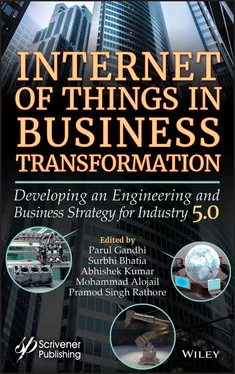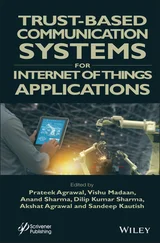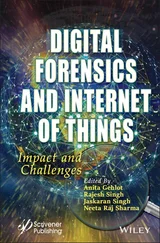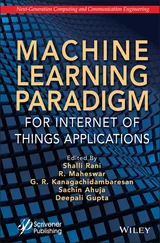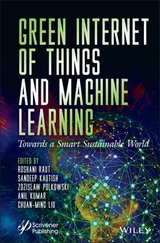1 a) Neural Networks-Based Strategy for Detection of Pipeline Leak DetectionThe overall architecture of the system is already designed in the section where leakage detection using digital signal processing is explained, in the section a representative system architecture. Here, we only analyze the details of the neural network from a very computational point of view. In the paper 3-layer neural network is used with a sigmoid activation function. In the method, the error is decreased by backpropagation.
2 b) Support Vector Machines-Based Strategy for Detection of Pipeline Leak DetectionWe have already seen the use of negative pressure wave method for leak detection in earlier section. We see that in negative pressure wave method, various computational methods are used to detect the leakage from the huge dataset that contains the leakage information as well as the noise from the pipeline, pipe fittings and environment. Use of these computational methods makes the model very expensive from a computational point of view. Therefore the use of Support vector machines in conjunction with negative pressure wave architecture proposed. Figure 1.7 Use of support vector machine for pipeline leak detection.A support is used to detect extreme cases—for our case the extreme cases are Leak or No Leak case. This is depicted in Figure 1.7.The data class is separated by hyper planes that divide both the classes clearly. The hyper planes are also called support vectors.Negative pressure wave method has pressure information from two different scenarios, one is when there is no leak and the pressure profile is usual and the other is when there is a leakage and the pressure profile has disturbances, support vector machines are used for correctly classifying these data and generating leads for detection of leak.A representative figure for showing the usage of Support Vector machines for negative pressure wave method is as follows,
1.3.4 Design and Analysis of Ensemble Learning-Based Approach for Pipeline Leak Detection
Ensemble learning is basically the method of taking advantage of more than one model to get the combined prowess of the models to achieve better accuracy of analysis. Due to the complexity of the data that we aggregate from a pipeline system, we may require the usage of multiple classification models to come to the conclusion. While there are various ensemble learning models, we choose random forest classifiers. Random forest classifier is one where we break the actual dataset into various bootstrapped samples and bind them with particular features that we want to classify them on. Then we fit these datasets into trees considering selected features only. Then the result that we get from these trees is averaged to get the final result. A representative figure to explain is given in Figure 1.8.
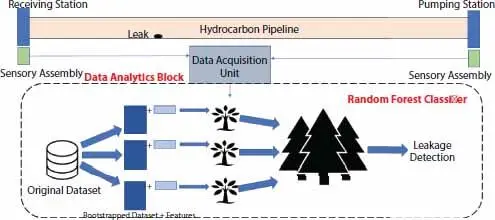
Figure 1.8 Evaluation of random forest classifier for leakage detection.
It is seen from the literature and analysis given in the chapter that there is a lot of work that is being done in the field of combining connected devices with the power of analytics and machine intelligence to make a system that has minimal to zero human interference.
Implementing algorithms to get desired output is a requirement is something that can only be explored through continuous experimentation and testing.
This chapter aims at making the foundation strong for a beginner in the field of Pipeline engineering, Industrial Internet of Things and Machine learning.
1. “In an energy-hungry world, natural gas gaining the most”, Amy Harder. Axio.com, June 2019.
2. Pydata 2018 Video (Youtube), Hot Water Leak Detection Using Variational Autoencoder Model—Jay Kim.
3. Na, L. and Yanyan, Z., Application of Wavelet Packet and Support Vector Machine to Leak Detection in Pipeline. 2008 ISECS International Colloquium on Computing, Communication, Control, and Management , 2008.
4. Ibitoye, Olakunle & Shafiq, Omair & Matrawy, Ashraf. (2019). A Convolutional Neural Network Based Solution for Pipeline Leak Detection.
5. Pipeline Stats in India, https://community.data.gov.in/length-of-natural-gaspipelines-in-india-from-2010-to-2017/.
6. Pipeline—data as per plot, https://www.indexmundi.com/energy/?product=gasoline&graph=consumption&display=rank.
7. Where are pipelines located?, https://pipeline101.org/Where-Are-Pipelines-Located.
8. Lim, K., Wong, L., Chiu, W.K., Kodikara, J., Distributed fiber optic sensors for monitoring pressure and stiffness changes in out-of-round pipes. Struct. Control Hlth. , 23, 2, 303–314, 2015.
9. Gamboa-Medina, M.M., Ribeiro Reis, L.F., Capobianco Guido, R., Feature extraction in pressure signals for leak detection in water networks. Procedia Eng. , 70, 688–697, 2014.
10. US Oil and Gas Pipeline Stats, https://www.bts.gov/content/us-oil-and-gaspipeline-mileage.
11. Definition of IIoT, https://internetofthingsagenda.techtarget.com/definition/Industrial-Internet-of-Things-IIoT.
12. Bolotina, I., Borikov, V., Ivanova, V., Mertins, K., Uchaikin, S., Application of phased antenna arrays for pipeline leak detection. J. Petrol. Sci. Eng. , 161, 497–505, 2018.
13. Adnan, N.F. et al. , Leak detection in gas pipeline by acoustic and signal processing—A review. IOP Conf. Ser.: Mater. Sci. Eng. , 100, 012013, 2015.
14. Wang, L., Guo, N., Jin, C., Yu, C., Tam, H., Lu, C., BOTDA system using artificial neural network. 2017 Opto-Electronics and Communications Conference (OECC) and Photonics Global Conference (PGC) , Singapore, pp. 1–1, 2017.
15. Shibata, A., Konishi, M., Abe, Y., Hasegawa, R., Watanabe, M., Kamijo, H., Neuro based classification of gas leakage sounds in pipeline. 2009 International Conference on Networking, Sensing and Control , 2009.
16. Feng, W.-Q., Yin, J.-H., Borana, L., Qin, J.-Q., Wu, P.-C., Yang, J.-L., A network theory for BOTDA measurement of deformations of geotechnical structures and error analysis. Measurement , 146, 618–627, 2019.
17. Three reasons why Oil will continue to run the world, https://www.forbes.com/sites/judeclemente/2015/04/19/three-reasons-oil-will-continue-to-run-the-world/.
18. Chen, Y., Kuo, T., Kao, W., Tsai, J., Chen, W., Fan, K., An improved method of soil-gas sampling for pipeline leak detection: Flow model analysis and laboratory test. J. Nat. Gas Sci. Eng. , 42, 226–231, 2017.
19. Chen, H., Ye, H., Chen, L.V., Su, H., Application of support vector machine learning to leak detection and location in pipelines. Proceedings of the 21st IEEE Instrumentation and Measurement Technology Conference (IEEE Cat. No.04CH37510) , Como, Vol. 3, pp. 2273–2277, 2004.
20. Thorley, A.R.D., Fluid Transients in Pipeline Systems , D&L George Limited, pp. 126–129, 1991.
21. Tian, C.H., Yan, J.C., Huang, J., Wang, Y., Kim, D.-S., Yi, T., Negative pressure wave based pipeline Leak Detection: Challenges and algorithms. Proceedings of 2012 IEEE International Conference on Service Operations and Logistics, and Informatics , 2012.
22. Hou, Q. and Zhu, W., An EKF-Based Method and Experimental Study for Small Leakage Detection and Location in Natural Gas Pipelines. Appl. Sci. , 9, 15, 3193, 2019.
23. Peng, Z., Wang, J., Han, X., A study of negative pressure wave method based on Haar wavelet transform in ship piping leakage detection system. 2011 IEEE 2nd International Conference on Computing, Control and Industrial Engineering, Wuhan , pp. 111–113, 2011.
Читать дальше
